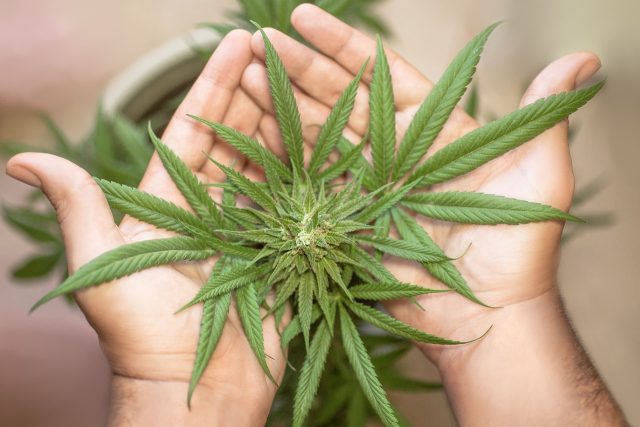Browse any online cannabis store and you’ll quickly notice dramatic price differences that can seem puzzling at first glance. Two products that look nearly identical might have price tags that differ by 50% or more, while premium options can cost several times what budget alternatives charge. Understanding what drives these price variations helps explain whether you’re looking at genuine quality differences or just clever marketing.
Cultivation Methods Drive Base Costs
The way cannabis is grown creates the foundation for all pricing decisions. Indoor cultivation requires significant infrastructure – climate control systems, specialized lighting, ventilation equipment, and higher electricity costs. These overhead expenses get passed along to consumers, which explains why indoor-grown flower typically costs more than outdoor alternatives.
Outdoor growing reduces many overhead costs but introduces other variables. Weather dependency, seasonal growing limitations, and potentially lower yields can affect pricing in different ways. Some outdoor operations produce exceptional quality at lower costs, while others struggle with consistency issues that limit their market value.
Hydroponic and soil growing methods also impact costs differently. Hydroponic systems require more technical expertise and equipment but often produce higher yields and more controlled results. Soil growing might use less technology but requires quality amendments and longer growing cycles.
Processing and Manufacturing Complexity
The complexity of turning raw cannabis into finished products significantly affects pricing. Basic flower products require minimal processing – mainly trimming, drying, and curing. But concentrates, edibles, and other processed products involve expensive extraction equipment, specialized facilities, and additional labor costs.
Extraction methods vary widely in cost and complexity. CO2 extraction requires expensive equipment but produces clean, high-quality concentrates. Butane extraction costs less to set up but requires more safety precautions. Rosin pressing uses heat and pressure without solvents but typically yields smaller quantities.
Edibles manufacturing adds another layer of complexity with commercial kitchen requirements, ingredient sourcing, packaging equipment, and food safety regulations. Each step in the manufacturing process adds costs that show up in final pricing.
Testing Requirements and Quality Control
Every legitimate cannabis product must undergo extensive laboratory testing before reaching consumers. This testing covers potency levels, pesticide residues, heavy metals, residual solvents, and microbial contamination. Testing costs typically range from $100-300 per batch, which gets distributed across all products from that batch.
Higher-end producers often conduct additional testing beyond regulatory requirements. They might test for terpene profiles, moisture content, or conduct stability testing over time. These extra quality control measures increase costs but can justify premium pricing for quality-conscious consumers.
Some retailers work directly with testing facilities or maintain relationships that provide better pricing on testing services. Operations that handle larger volumes, such as those found at https://www.bulkcannabis.cc, can often spread testing costs across more units, which can contribute to more competitive pricing on quality-tested products.
Brand Positioning and Marketing Costs
Cannabis branding and marketing expenses vary enormously between companies. Premium brands invest heavily in packaging design, marketing campaigns, and brand development. These costs get built into product pricing, which explains why some products with fancy packaging cost significantly more than similar products in basic containers.
Marketing restrictions in the cannabis industry mean companies often rely on expensive alternative marketing methods. Influencer partnerships, event sponsorships, and specialized advertising platforms typically cost more than traditional marketing channels available to other industries.
Some brands focus on celebrity endorsements or partnerships with well-known figures in cannabis culture. These associations can command premium pricing but don’t necessarily indicate better product quality.
Supply Chain and Distribution Factors
The path from grower to consumer involves multiple steps that each add costs. Wholesale distributors, transportation companies, and retailers all take margins that increase final prices. Products that go through longer distribution chains typically cost more than those sold directly from producers.
Geographic factors play a major role in pricing. Cannabis products in areas with limited competition or restricted licensing often cost more than those in mature markets with many retailers. Transportation costs from growing regions to retail markets also affect pricing, especially for heavier products.
Inventory management affects pricing too. Products that sell quickly can command higher prices, while slow-moving inventory might get discounted to clear space for newer products.
Regulatory Compliance Costs
Cannabis businesses face regulatory costs that other industries don’t encounter. Licensing fees, compliance monitoring, security requirements, and specialized insurance all add overhead that gets reflected in product pricing. These costs vary significantly between different jurisdictions.
Security requirements alone can add substantial costs. Many regulations require extensive surveillance systems, alarm systems, transport security, and secure storage facilities. These expenses get distributed across all products sold by the business.
Tax structures also vary widely and significantly impact final pricing. Some areas impose high excise taxes on cannabis products, while others use different tax structures that affect pricing in various ways.
Scale and Efficiency Advantages
Larger operations often achieve economies of scale that allow them to offer better pricing. They can negotiate better rates for supplies, utilities, and services while spreading fixed costs across larger product volumes. This size advantage explains why some larger retailers can offer competitive pricing on quality products.
Smaller operations might have higher per-unit costs but can sometimes compete through specialization, unique products, or superior customer service. The cannabis market has room for both large-scale efficiency and small-batch specialization.
Vertical integration – where companies control multiple steps from growing to retail – can eliminate middleman markups but requires significant capital investment. These operations might offer better pricing on some products while maintaining higher margins on others.
Understanding Value vs. Price
Smart cannabis shoppers learn to distinguish between legitimate quality differences and marketing-driven pricing. Higher prices don’t automatically mean better products, just as lower prices don’t necessarily indicate poor quality. The key is understanding what specific factors justify price differences for your particular needs and preferences.
Laboratory testing results, cultivation methods, processing techniques, and retailer reputation provide better indicators of value than price alone. Products with detailed information about their production and testing typically offer more predictable experiences than those with vague descriptions, regardless of pricing.
